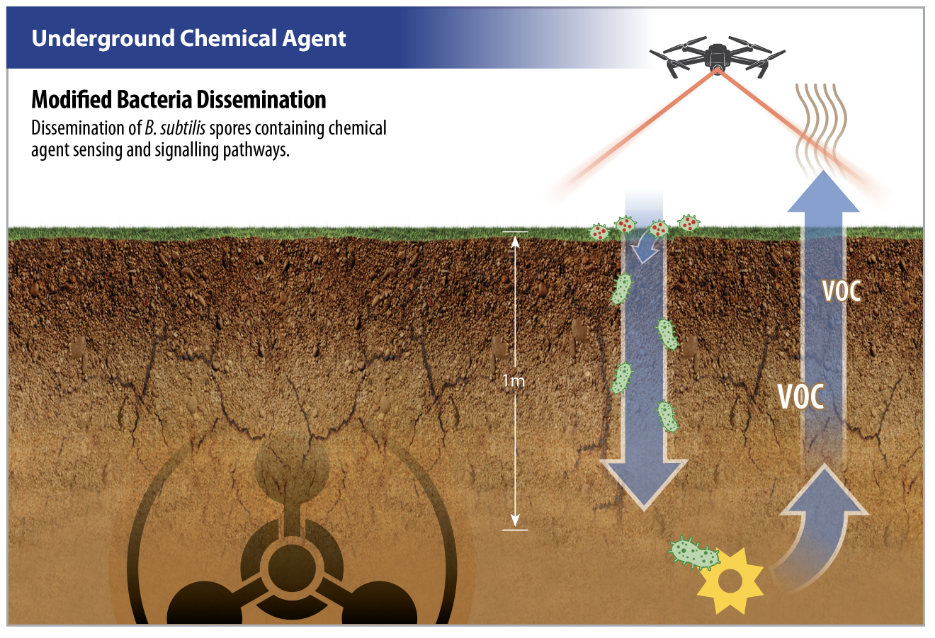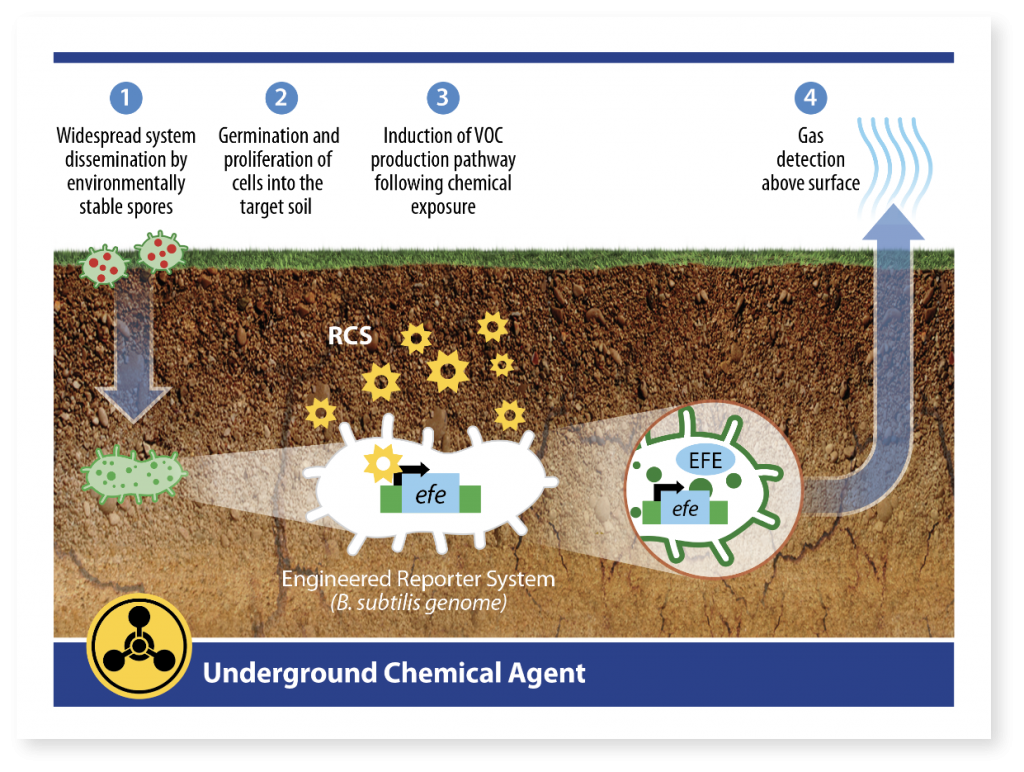
Molecular Biologist
Contact Danielle
The Defense Advanced Research Projects Agency (DARPA) BioReporters for Subterranean Surveillance program funded the development of novel biological systems to monitor for underground CBRNE threats. These systems had to be delivered to at least the depth of one meter over potentially large areas, be suitably persistent in soil and sensitive to chemical threat agents, be able to generate sufficient signal to enable standoff detection via intermittent surveillance and be compatible with a wide array of CONOPs. With DARPA Bioreporters funding, Signature Science and its partner, the Texas A&M University Center for Phage Technology, developed the Spore Amplified Detection (SpADe) method by leveraging modern molecular genetics of the harmless soil bacterium Bacillus subtilis.

The spore-based SpADe platform detects chemical exposures (reactive chlorine species within complicated soil matrices) via the use of engineered Bacillus bacterial pathways. This chemical sensing is paired with the system’s gas reporter (ethylene produced by the ethylene-forming enzyme efe), which is capable of diffusing from subterranean depths to the soil surface and enables hyperspectral imaging for gas detection at standoff distance. SpADe is a modular system environments with versatility for a range of soil-based and subterranean applications with standoff compatibility, such as for defense, remediation, or prospecting.
SpADe System for CW Detection

Want more information about SpADe?
